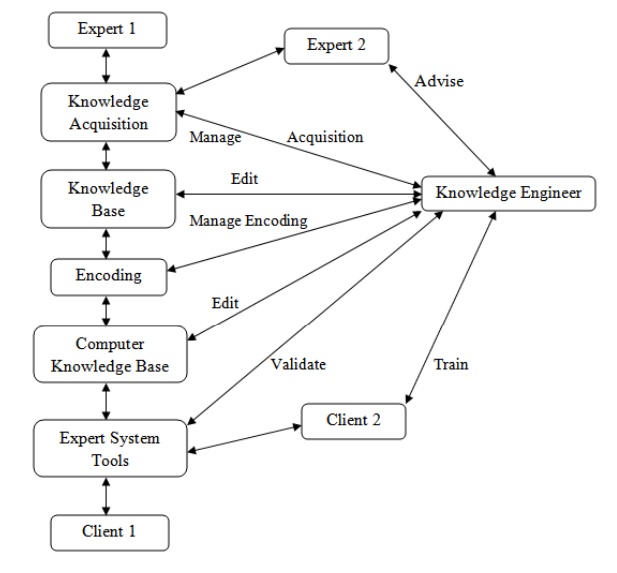Chapter: Artificial Intelligence
Knowledge Acquisition Techniques
KNOWLEDGE ACQUISITION
Knowledge acquisition is the gathering or collecting knowledge from
various sources. It is the process of adding new knowledge to a knowledge base
and refining or improving knowledge that was previously acquired. Acquisition
is the process of expanding the capabilities of a system or improving its
performance at some specified task. So it is the goal oriented creation and
refinement of knowledge. Acquired knowledge may consist of facts, rules,
concepts, procedures, heuristics, formulas, relationships, statistics or any
other useful information. Source of these knowledges may be experts in the
domain of interest, text books, technical papers, database reports, journals
and the environments. The knowledge acquisition is a continuous process and is
spread over entire lifetime. Example of knowledge acquisition is machine
learning. It may be process of autonomous knowledge creation or refinements
through the use of computer programs. The newly acquired knowledge should be
integrated with existing knowledge in some meaningful way. The knowledge should
be accurate, non-redundant, consistent and fairly complete. Knowledge
acquisition supports the activities like entering the knowledge and maintaining
knowledge base. The knowledge acquisition process also sets dynamic data
structures for existing knowledge to refine the knowledge.
The role of knowledge engineer is also very important with respect to
develop the refinements of knowledge. Knowledge engineers may be the
professionals who elicit knowledge from experts. They integrate knowledge from
various sources like creates and edits code, operates the various interactive
tools, build the knowledge base etc.

Figure Knowledge Engineer’s Roles
in Interactive Knowledge Acquisition
Knowledge Acquisition Techniques
Many techniques have been developed to deduce knowledge from an expert.
They are termed as knowledge acquisition techniques. They are:
a)
Diagram Based Techniques
b)
Matrix Based Techniques
c)
Hierarchy-Generation Techniques
d)
Protocol Analysis Techniques
e)
Protocol Generation Techniques
f)
Sorting Techniques
In diagram based techniques the generation and use of concept maps,
event diagrams and process maps. This technique captures the features like
“why, whe n, who, how and where”. The matrix based techniques involve the
construction of grids indicating such things as problems encountered against
possible solutions. Hierarchical techniques are used to build hierarchical
structures like trees. Protocol analysis technique is used to identify the type
of knowledge like goals, decisions, relationships etc. The protocol generation
techniques include various types of interviews like structured, semi-structured
and unstructured.
The most common knowledge acquisition technique is face-to-face
interview. Interview is a very important technique which must be planned
carefully. The results of an interview must be verified and validated. Some
common variations of an unstructured interview are talk through, teach through
and read through. The knowledge engineer slowly learns about the problem. Then
can build a representation of the knowledge. In unstructured interviews, seldom
provides complete or well-organized descriptions of cognitive processes because
the domains are generally complex. The experts usually find it very difficult
to express some more important knowledge. Data acquired are often unrelated,
exists at varying levels of complexity, and are difficult for the knowledge
engineer to review, interpret and integrate. But on the other hand structured
interviews are systematic goal oriented process. It forces an organized
communication between the knowledge engineer and the expert. In structured
interview, inter personal communication and analytical skills are important.
Related Topics